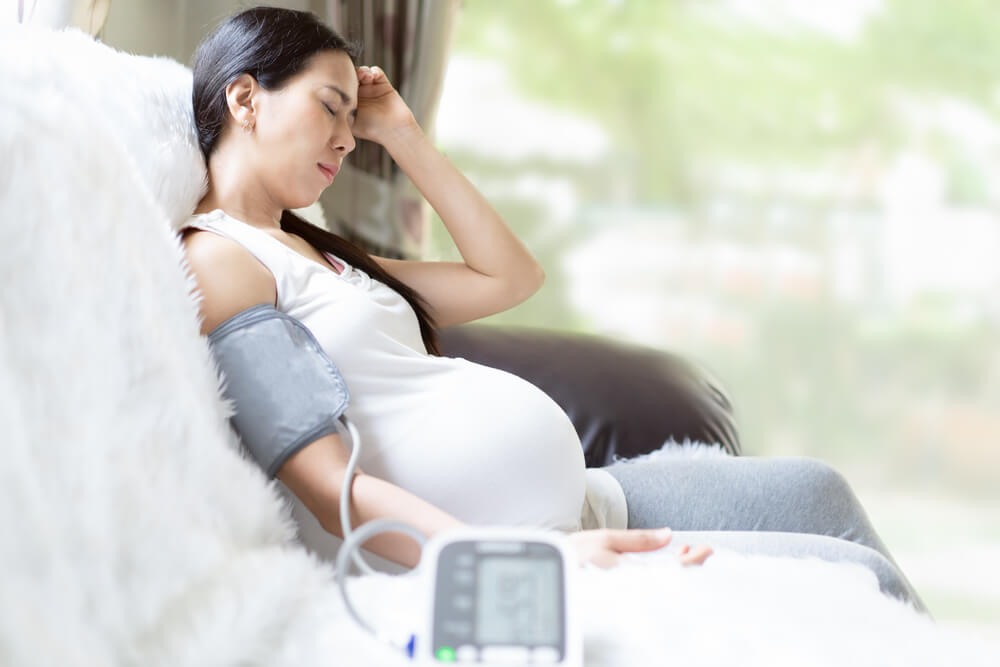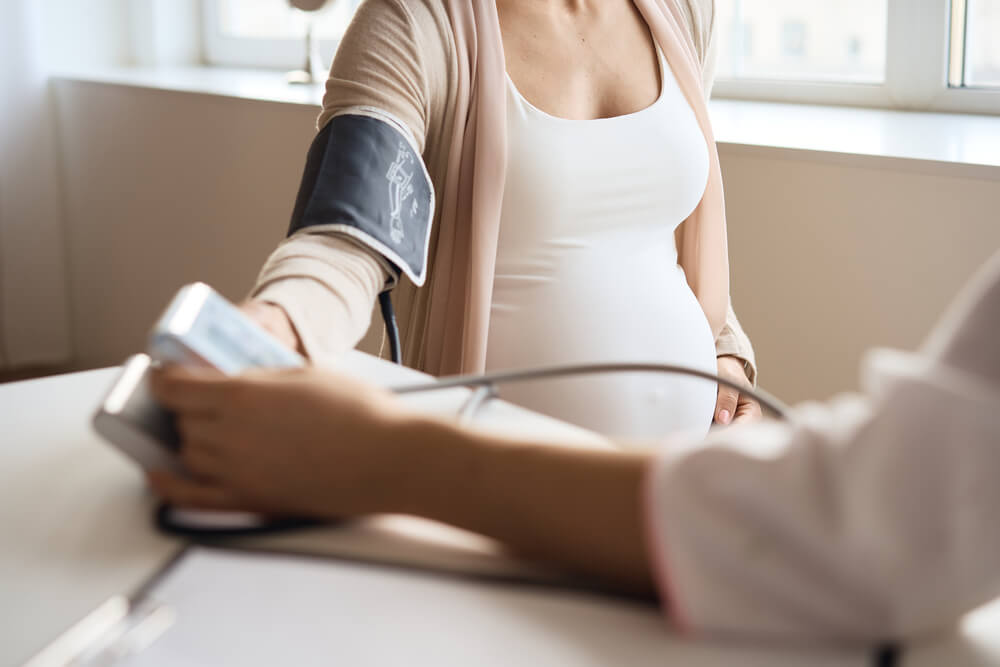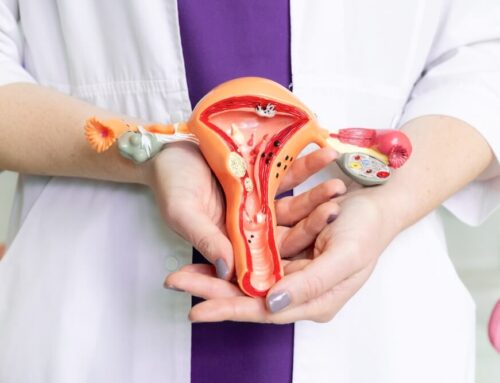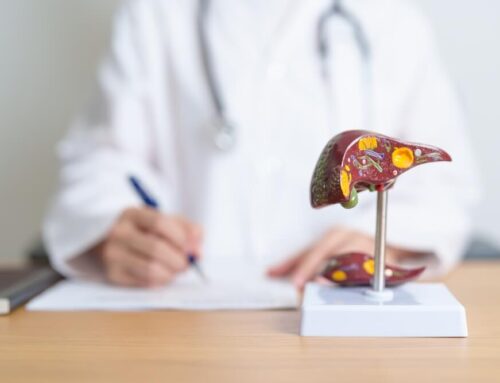What is Preeclampsia?
Preeclampsia is a complication of pregnancy that typically starts after 20 weeks into pregnancy and whose blood pressure had previously been normal. Postpartum preeclampsia can occur after the delivery of your baby. If left untreated, preeclampsia can cause serious complications for you and your baby, but what is it distinguished by?
Preeclampsia presents as high blood pressure and signs of damage to another organ system as well, usually the kidneys and liver. Keep reading to learn about preeclampsia warning signs, risk factors, and how to prevent it through preventative medicine and various treatments advised by Trogolo Obstetrics and Gynecology.
Preeclampsia Symptoms
Sometimes, preeclampsia develops without symptoms, but when symptoms do occur, high blood pressure can develop slowly or suddenly. Because of this, it is crucial to monitor your blood pressure regularly in your prenatal care, and if your blood pressure is abnormal, we recommend consulting your physician promptly to rule out preeclampsia in your pregnancy.
Preeclampsia warning signs include:
- Severe headaches
- Nausea
- Vomiting
- Protein in urine
- Decrease in urine
- Thrombocytopenia
- Abnormal changes to your vision
- Impaired liver or kidney function
- Shortness of breath
- Sudden weight gain
- Swelling in face and hands

Causes & Risks of Preeclampsia
Preeclampsia symptoms begin and are caused by a variety of factors. In women with preeclampsia, the blood vessels that usually efficiently send blood to the placenta instead do not develop or function properly. The causes of this abnormal development may be brought about by certain genetic factors, issues with the immune system, insufficient blood flow to the uterus, and/or damage to blood vessels.
Risk factors of preeclampsia include the following:
- A personal or familial history
- First pregnancy or new paternity
- Increased risk over the age of 35
- Chronic hypertension
- In vitro fertilization
- Obesity
- Race
- Time between pregnancy
In addition, a health history including certain health conditions, such as migraines, diabetes, chronic high blood pressure, kidney or liver disease, lupus or other autoimmune disorders, history of developing blood clots, and more are also risk factors.
Taking Action
Because nausea, headaches, and aches and pains are typical complaints in pregnancy, experiencing them can be confusing. Sometimes, it is hard to determine whether these preeclampsia symptoms are indicative of something else. Tell your doctor and visit the emergency department if you are experiencing preeclampsia warning signs such as blurred vision, severe pain in the abdomen, shortness of breath, or severe headaches.
Testing for Preeclampsia
Suppose you are experiencing preeclampsia symptoms or your doctor suspects the above preeclampsia warning signs are putting you and your baby at risk. In that case, they may order a variety of tests to confirm their diagnosis. These tests will include liver and kidney function tests and measuring your platelets, known as the cells that help the blood to clot. In addition to this, your doctor will order a urinalysis to measure the amount of protein in your urine to confirm or rule out preeclampsia.
A fetal ultrasound will also be needed to determine your baby’s weight, growth, amniotic fluid, or fluid in the uterus. Finally, a nonstress test will be performed to measure your baby’s heart rate and a biophysical profile to measure your baby’s muscle, movement, amniotic fluid, and breathing. If your doctor diagnoses you with preeclampsia, you will need more prenatal visits than what is usually recommended for pregnancy.
How to Prevent Preeclampsia
You may be wondering, “What is preeclampsia treatment that is right for me?” The most effective is delivering your baby, but of course, this is not possible earlier in your pregnancy. Here are some ideas for how to prevent preeclampsia and reduce your risks:
- Low-dose aspirin
- Calcium supplements
- Taking Vitamin D
- Corticosteroids
- Anticonvulsant Medication
- Bed rest
- Hospitalization
Before beginning any medications or vitamins and supplements, we recommend consulting your doctor beforehand. In addition to this, make sure any health conditions or concerns are well-managed and that you are attending preventative care appointments. When you become pregnant, you can care for yourself and your baby by attending regular prenatal care appointments. By detecting preeclampsia early, you can work with your doctor to prevent pregnancy complications.
Postpartum Preeclampsia
Postpartum preeclampsia is a rare condition that can occur after childbirth characterized by high blood pressure and high levels of protein in her urine. This is serious and can lead to brain damage, stroke, HELLP syndrome, or death if not treated. Postpartum preeclampsia is related to preeclampsia, and most women who develop postpartum preeclampsia do this within 48 hours of childbirth to six weeks afterward. Risk factors include:
- Hypertension, or high blood pressure
- Family history of preeclampsia
- Being an older mother, over age 40
- Being a younger mother, under age 20
- Carrying and delivering twins or multiples
- Obesity
Causes & Symptoms of Postpartum Preeclampsia
There are several symptoms of postpartum preeclampsia, and you should seek medical care promptly if you are experiencing any of the following symptoms. Postpartum preeclampsia can have severe consequences and complications if it is not treated. Here are some signs of postpartum preeclampsia:
- Nausea and vomiting
- Abdominal pain
- Rapid weight gain
- High blood pressure (140/90)
- Protein present in urine
- Severe headaches
- Swelling of face, hands, feet, etc.
- Changes in vision or blurred vision
- Decreased urination

Diagnosing Postpartum Preeclampsia
To rule out or confirm postpartum preeclampsia, your doctor may perform tests such as a blood pressure check, blood tests to do a platelet count checking the function of your kidneys and liver, a urinalysis to screen for protein in your urine, and perhaps even a brain scan to check for any possible brain damage from a seizure. Based on your diagnosis, your healthcare provider can determine the appropriate management and treatment of your condition.
What Comes Next
If you do in fact have postpartum preeclampsia, your doctor may prescribe the following treatments. Treatments include blood pressure medication, anti-seizure medication, and an anticoagulant or blood thinner to reduce the risk of blood clots. If left untreated, preeclampsia and postpartum preeclampsia can lead to serious complications.
Outlook
When it comes to preeclampsia and postpartum preeclampsia, they are both serious conditions and complications of pregnancy that require swift medical attention. On the bright side, the prognosis for a full recovery is good once the condition is diagnosed and promptly treated. At Trogolo Obstetrics and Gynecology, we provide top-of-the-line care and compassion to all of our patients, and we are fully equipped and skilled to help you through difficult conditions, including preeclampsia. Give us a call or visit our website today to learn more about what we offer. Start your journey with Trogolo to receive the healthcare you deserve!





